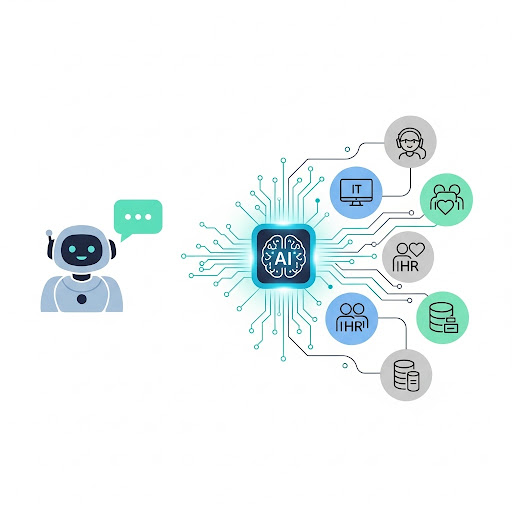AI Bias: The Invisible Bug That Could Tank Your Product (And How to Stop It)
- James Russo
- Aug 4
- 5 min read

Your shiny new AI-powered hiring tool is a thing of beauty. It’s screening resumes faster than a caffeinated intern, pinpointing top candidates with a terrifying level of accuracy, and saving everyone a mountain of time. Leadership is thrilled. The metrics look great.
Then someone from HR notices something a little… off. Ninety percent of the "top candidates" being flagged are men. For a company that has been actively, publicly working toward gender diversity, this is a five-alarm fire.
Congratulations, you've just discovered AI bias in the wild. That invisible, lurking bug that can turn your innovative, game-changing product into a discrimination lawsuit waiting to happen. It's the silent killer of enterprise projects, and it's time we talk about it.
What AI Bias Actually Is (And Why It's Not a Malicious Robot)
Most people think AI bias means the algorithm is somehow prejudiced, like a sentient program in a top hat that woke up one morning and decided it just didn’t like certain people. The reality is far more mundane and, frankly, much more dangerous.
AI systems don’t invent bias; they learn it from the data you give them. If that data reflects a history of biased decisions, the AI will happily—and efficiently—automate those same bad decisions.
The Simple Truth: An AI is a really, really efficient photocopier. If you give it a document with a coffee stain, it's not going to clean up the stain—it's going to make a perfect copy of that stain on every single page. AI does the same thing with the bias patterns that already exist in your historical data.
The Three Flavors of Bias That Will Ruin Your Week
Bias isn't a monolith; it shows up in a few different ways. Knowing where to look is half the battle.
Historical Bias: When the Past Comes Back to Haunt You. This is when your AI learns from historical data that reflects past discrimination or skewed practices. That hiring tool we talked about? It was trained on ten years of resume data from a male-dominated industry. It learned that "successful candidates" look like the people who were hired in the past—mostly men. The result? You're not just maintaining the status quo; you're making historical bias more efficient and harder to detect.
Representation Bias: When Your Data Doesn't Look Like Your Market. Your training data is like a photo album for your AI. If that photo album only has pictures of one type of person, the AI will think that's all that exists. An AI for a healthcare app trained primarily on data from young, healthy patients might perform poorly when diagnosing an elderly patient with multiple conditions. The result? Your AI becomes really good at serving one segment while failing everyone else, usually the segments you most need to reach.
Measurement Bias: When Your Success Metrics Are Skewed. This is when the way you define "success" in your training data reflects existing, systemic biases. A loan approval system that uses "credit score" as the primary success indicator might discriminate against communities that have historically had limited access to credit. The metric itself isn't a full picture of someone's ability to repay a loan. The result? You're optimizing for metrics that perpetuate systemic inequalities, even if that wasn't your intention.
The Business Case for Caring (Beyond Just Being a Good Person)
Let’s be honest: while being a good human is important, your boss also cares about the bottom line. And bias is a business risk.
Legal Risk: Discrimination lawsuits are expensive. The EU AI Act and other regulations are making bias testing a non-negotiable for high-risk applications.
Market Risk: Biased AI alienates customers and limits your addressable market. You’re literally building barriers to your own growth.
Reputation Risk: In the social media age, biased AI behavior goes viral fast. Ask any company that’s had their chatbot start saying inappropriate things. It's a PR nightmare.
Performance Risk: This is the most underrated one. Biased models actually perform worse overall because they're missing important patterns in underrepresented groups. They’re less accurate, period.
Your Playbook for Not Tanking Your Product
You can't just hope this problem goes away. You need a systematic, repeatable process to fight it.
Before You Build: The Data Audit (Again!)
Remember our article on data quality? This is where it really matters. Go beyond the typos and ask the hard questions.
Who is represented in our training data, and who's missing?
What historical biases might be reflected in our data? (e.g., was this a time of known discrimination?)
Are we using "proxy variables" that could mask discrimination? (e.g., zip code or school as a stand-in for race or socioeconomic status).
During Development: The Bias Testing Protocol
Don't just measure overall accuracy. Be a little more intentional with your testing.
Disaggregated Testing: Don't just measure overall accuracy. Test your model's performance across different demographic groups. Does it perform equally well for men and women? For different age groups? For different regions?
Fairness Metrics: There are multiple ways to define "fair." Pick the ones that matter for your specific use case. Does your model give everyone an equal opportunity? Are outcomes distributed equally across groups?
Adversarial Testing: Deliberately try to find edge cases where your model might behave unfairly. Think like a hacker, but for ethics.
After Launch: The Monitoring System
Your work isn't done after you hit the big green "go" button. Bias can emerge over time as your user base changes or as the world changes around your model.
Continuous Monitoring: Keep an eye on your AI's decisions. Set up a dashboard that tracks key fairness metrics over time.
Feedback Loops: Create easy ways for users to report unfair or unexpected outcomes. This human-in-the-loop feedback is gold.
Regular Audits: Schedule periodic bias assessments, especially before major product updates.
Reality Check: Bias testing is not too expensive or complex. It's significantly cheaper and less painful than a discrimination lawsuit or a regulatory fine.
The Bottom Line: Bias Is a Product Quality Issue
Stop thinking about AI bias as a nice-to-have ethics consideration. It's a core product quality issue that affects performance, user experience, legal compliance, and business outcomes. The companies building successful AI products aren't the ones with the most sophisticated algorithms—they're the ones that systematically identify and address bias before it becomes a problem.
Your users deserve AI that works fairly for everyone. Your business deserves AI that doesn't create legal and reputational risks. And you deserve to sleep soundly knowing your product is helping solve problems rather than perpetuating them. Start testing for bias today. Because the alternative—discovering it after your product is in the wild—is a much more expensive conversation to have.



Comments